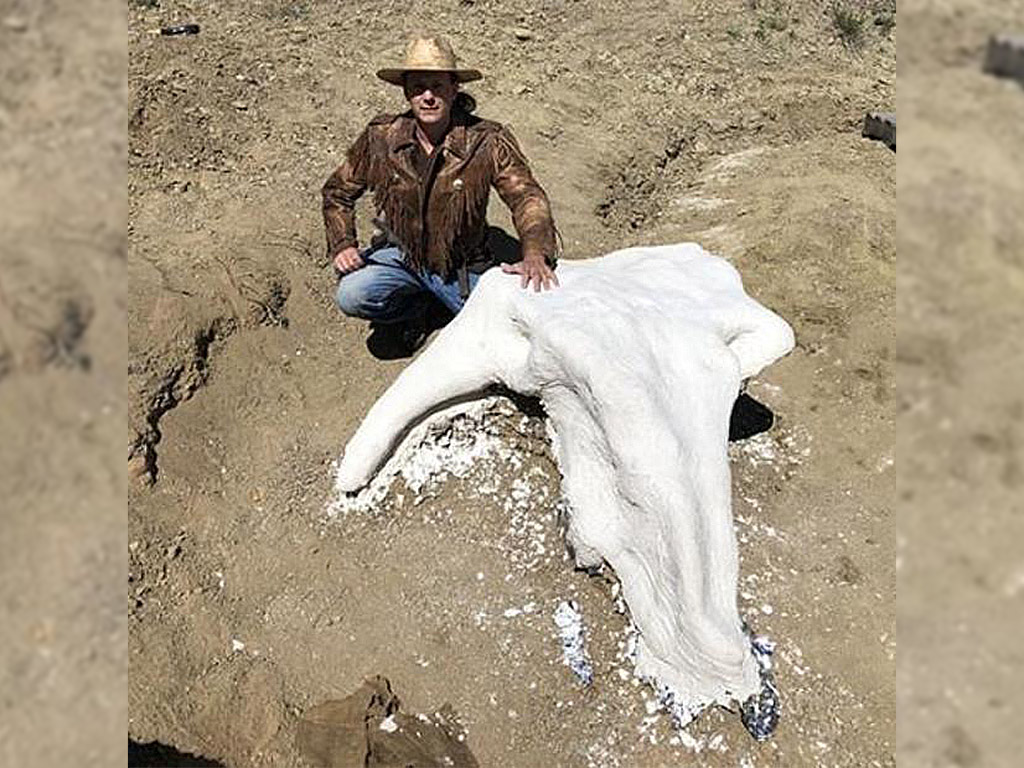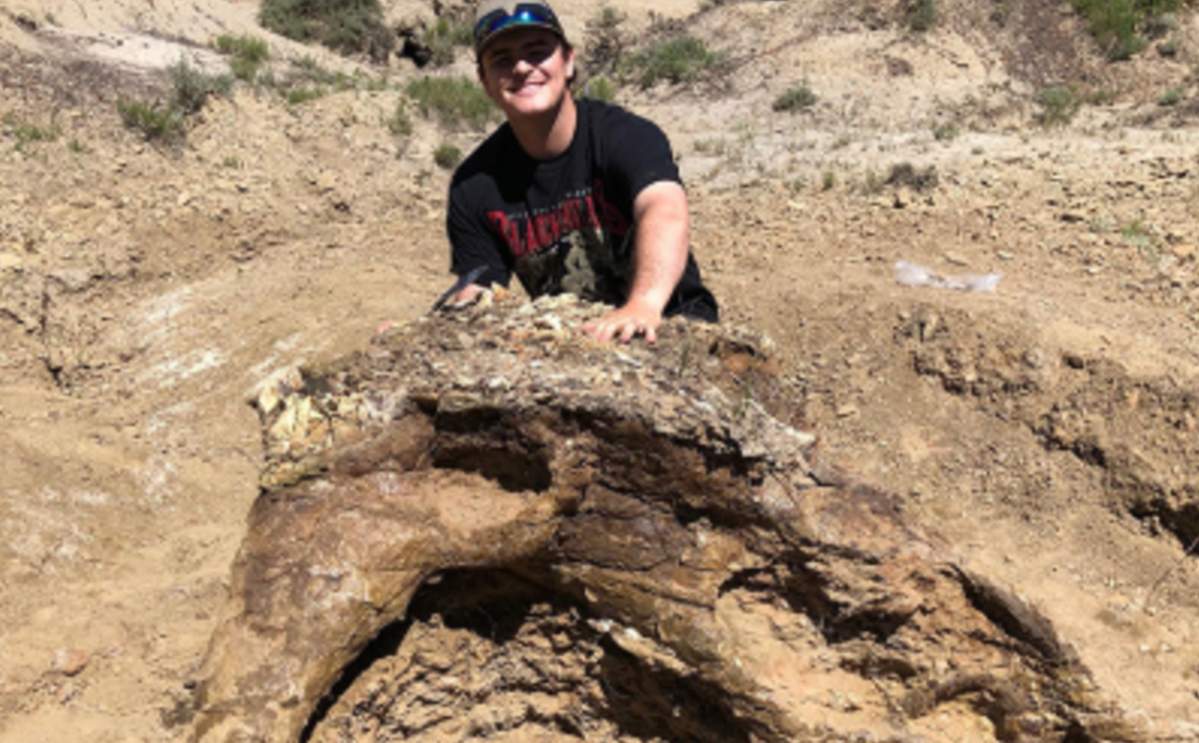When Harrison Duran, a fifth-year biology student in California, travelled to North Dakota for a paleontology dig, he likely didn’t expect to uncover a massive piece of history.

Buried beneath the badlands known as the Hell Creek Formation was “Alice,” a 65-million-year-old Triceratops whose skull was just waiting to be discovered.
A lover of dinosaurs since he was a little boy, Duran was understandably gobsmacked by his luck when he unearthed the fossilized remains.
READ MORE: Fossils give evidence of asteroid strike that might have killed dinosaurs
“I can’t quite express my excitement in that moment when we uncovered the skull,” he said in a news release from the University of California, Merced on Wednesday. “I’ve been obsessed with dinosaurs since I was a kid, so it was a pretty big deal.”
RELATED VIDEO: Mosasaur fossil found at ammonite mine
_848x480_1552107587539.jpg?w=1040&quality=70&strip=all)
Duran was on a two-week dig trip to the fossil hot spot under the supervision of Michael Kjelland, an experienced excavator and biology professor at Mayville State University.

Get breaking National news
Hell Creek has yielded many incredible fossil discoveries from different kinds of dinosaurs, as well as plants that offer clues about what the area was like all those years ago.
“It is wonderful that we found fossilized wood and tree leaves right around, and even under, the skull,” Duran said in the statement. “It gives us a more complete picture of the environment at the time.”
Kjelland discovered another Triceratops skull last year, but this was the first time he’s ever searched in this particular area.
“I have been going out to the badlands for years off and on, but to this particular site it was the first time,” he explained to CNN.
LISTEN BELOW: Harrison Duran joins the 630 CHED Afternoon News to discuss his discovery
They stumbled upon the skull on the fourth day of their dig in early June. It took a week to fully excavate it due to its fragility.
Duran expects to rejoin Kjelland in North Dakota to continue excavating Alice. They named the dinosaur after the owner of the land.
And while the bones remain at a hidden location, Duran hopes they will eventually make their way back to his school.
“It would be amazing for UC Merced to be able to display Alice on campus,” he said. “It’s such a rare opportunity to showcase something like this, and I’d like to share it with the campus community.”
The biology major is a member of the nonprofit organization Fossil Excavators, which aims to educate others about the importance of discovering and preserving fossils.
—
meaghan.wray@globalnews.ca





Comments